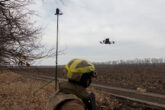April 19, 2017
Keeping Up Civ-Mil Relations
James Mattis was sworn in as secretary of defense in what is arguably one of the more fraught periods in civil-military relations in decades.
While civilian control in the United States is based on a solid foundation of history, doctrine, and tradition, civil-military relationships are above all human. And that means they are vulnerable to unrealistic or unmet expectations and perceptions. Simply put, tension invariably infuses these relationships — it’s merely a question of how much and in which way. As such, this relationship should expect strains, some demanding mitigation.
Nearly two decades of (inconclusive) war, serious lapses in the quality of support to our veterans, and a destabilizing budget roller coaster have been some of the major stressors. These are bracketed by a growing disconnect between those who serve, the civilian population, and emerging political factors. A particularly tumultuous election with unprecedented veteran and general officer partisan participation did not stop or mitigate threats of purges of general officers by the Trump campaign. Despite such anti-military rhetoric, Trump eventually faced suspicion that his cabinet was overly militarized and went to bat in support of a waiver for Mattis’s own confirmation. These events, along with an expected, but nonetheless toxic, increase in friction between military and civilian staffs at the Pentagon set the stage for Mattis’ arrival at the River Entrance a few short months ago.
Read the full article at War on the Rocks.
More from CNAS
-
Defense / Transatlantic Security
When Defense Becomes Destruction: Austria-Hungary’s Mistake and Ukraine’s RiskThis article was originally posted on War on the Rocks. The southeastern Polish city of Przemyśl, with its elegant 19th century Habsburg-era train station, remains one of the ...
By Franz-Stefan Gady
-
Defense / Transatlantic Security
Ukraine’s Catch-22 MomentThis article was originally published in the Financial Times. In Joseph Heller’s wartime classic, Catch-22, the protagonist Yossarian seeks out the US army surgeon Doc Daneeka...
By Franz-Stefan Gady
-
CNAS Insights | Budgetary Own Goals Undermine “Speed and Volume”
On November 7, Secretary of Defense Pete Hegseth laid out a plan to overhaul the Department of Defense’s (DOD’s) acquisition system. Placing an emphasis on delivering new capa...
By Philip Sheers, Carlton Haelig & Stacie Pettyjohn
-
Drones: Who Is Making the New Weapons of War?
From Ukraine and Russia to Gaza and Sudan, drones have become a key weapon of war. Which companies are making them, and profiting from this rapidly expanding but controversial...
By Stacie Pettyjohn




